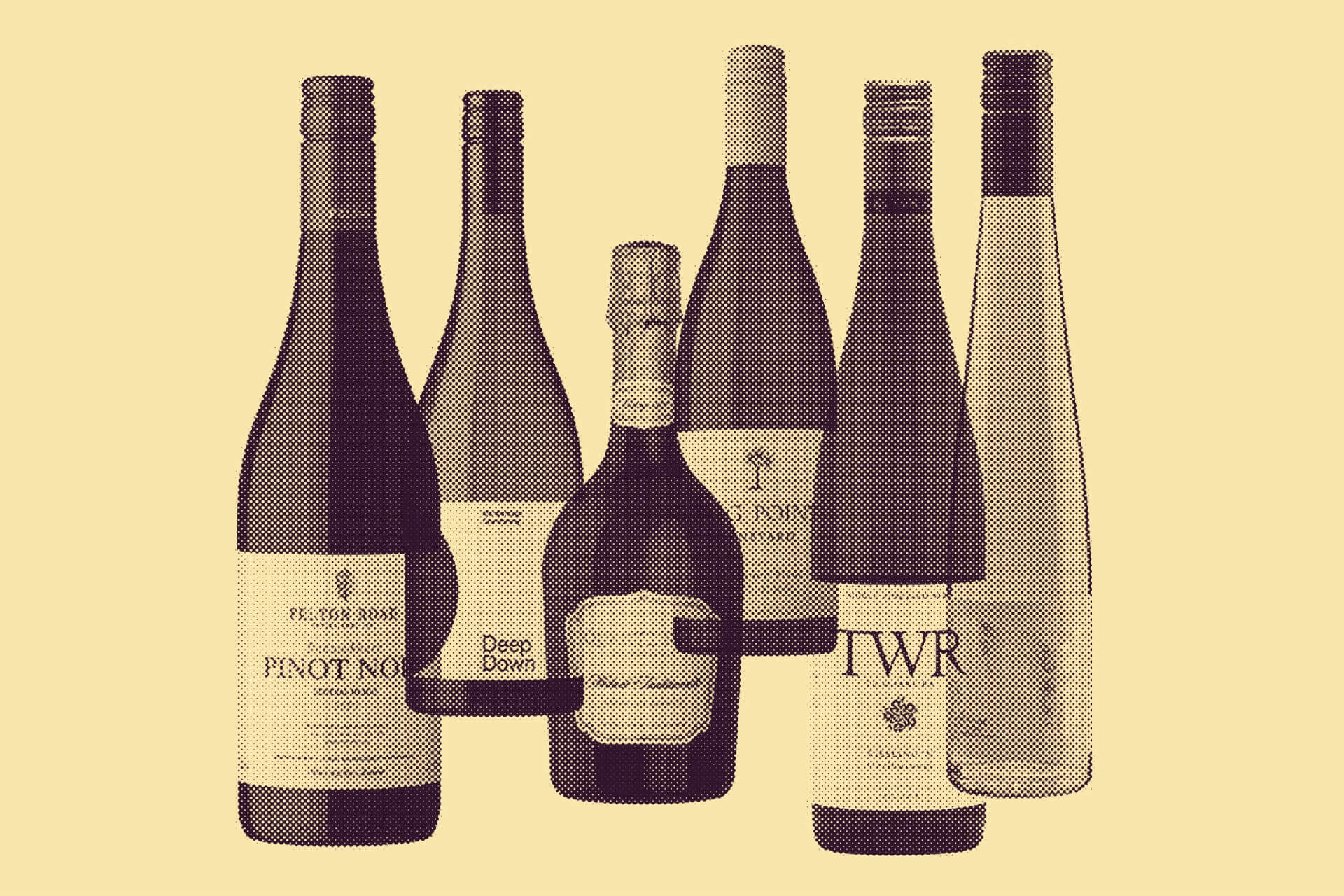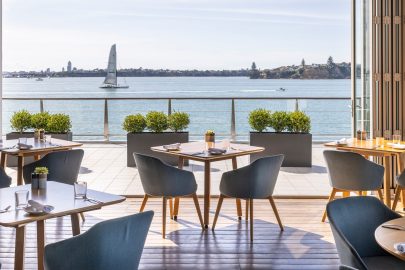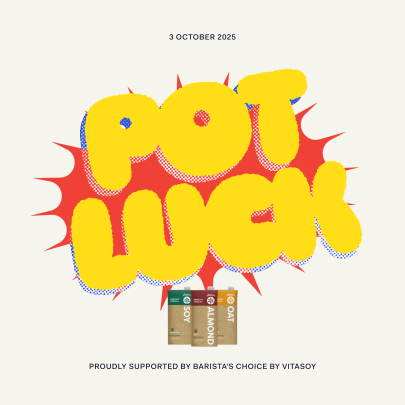Mar 1, 2023 Food
Note: long after Olly wrote this story, Cyclone Gabrielle hit New Zealand, wreaking particular destruction in Hawke’s Bay. If you’d like to help, Hawke’s Bay Winegrowers Charitable Trust has set up a Cyclone Gabrielle Relief Fund. Of donations, 100% will go to those most in need in the Hawke’s Bay wine community, and the Hawke’s Bay Winegrowers trust will match donations up to $30,000.
For New Zealand donations, please use the bank account as follows:
NAME: HBW Charitable Trust
NUMBER: 02-0700-0005785-025
REEFERENCE: HBWGRF
and your name and cell number
If you require a donation receipt, please email
info@hawkesbaywine.co.nz
For more information, visit
hawkesbaywine.co.nz/cyclone-relief
— — —
Pouring wines at a tasting several months back, I was asked why we — Halcyon Days, the wine I make with my wife and partner Amy — only do organic wines. There’s no one answer to that, although the implication of the question, of course, is that I must have a favourite tofu recipe and a good line in homegrown marijuana. Not wishing to add bricks to the foundations already laid, I took the opposite tack.
“I once knew a viticulturist who was as salt-of-the-earth as viticulturists get,” I said, “yet he refused to drive out to put a spray on a vineyard because the tractor cab was not sealed from the outside air. In his words: ‘I’d like to have kids one day’.”
I might have embellished the drama somewhat, but it got the point across. It doesn’t mean organic viticulture is free from chemicals (sulphur and copper are still used in organic vineyards to a large degree, although organic viticultural products with the potential to lessen the use of sulphur/copper are coming on to the market all the time). But it is free from synthetically produced compounds, and that does count for something.
If you’re tempted to think that no one’s paying much attention to all this, take yourself back to July 2022 when New Zealand and the European Union announced their free-trade deal (covering the likes of milk products, meat, wine and fruit). The potential issues with the deal didn’t get much attention in New Zealand, but there was some grumbling in Europe — going further than the obvious point that a pot of yoghurt would be travelling 10,000km to get to a Gallic supermarket.“New Zealand does not apply environmental, animal welfare and climate standards in the same way as European farmers do,” said the European branch of family farm pressure group La Via Campesina.
While criticism was largely focused on the dairy and beef industries, it underlines just how much attention is being paid abroad to farming choices. Such issues will, hopefully, become more important for consumers here too. And that’s why organics and organic certification is important. Of course, certification — the cost, the process and its robustness — itself receives regular criticism, but it does at least set a standard (for some, one that isn’t yet high enough).
Now we get to the point where I had been planning to berate the wider New Zealand wine industry for being slow to embrace organics. However, a recent tasting was a pleasant reminder that, while many large-scale wineries have yet to embrace organics to a meaningful degree, it is now almost de rigueur in quality wine production here. Name almost any top-flight producer of pinot noir in New Zealand and they are, if not completely organic (and biodynamic), then the majority of their production is. Organics has become practically synonymous with quality. Perhaps the best indicator of this is to look at the wineries that aren’t organic: their marketing still uses phrases like ‘striving towards’ organics or ‘increasing our focus’ on organics. That speaks volumes.
After putting out a call for organic wines to taste and compare, it soon became apparent that organic production is impressively well-represented in this country. (At least once the labels were revealed — all wines were tasted and rated blind.) And especially because I knew that the tasting represented only a small proportion of the full array of organic wines being made.
There were a number of sauvignon blancs that were a treat to taste. Dog Point got the top-10 mention but the Deep Down example was a glorious, more serious (almost Bordeaux-style) wine, while Marlborough-based Kimura Cellars produced a very bright and zippy example.
The rieslings were a standout. Te Whare Ra’s D (2020) and M (2021), Zephyr’s 2022, Rippon’s Mature Vine 2020 and Greenhough’s Apple Valley 2022 were glorious wines. Wine writers the world over are known for their Sisyphean attempts to get the oblivious public to drink more riesling and this is my addition to the canon. If you must have them dry, the Te Whare Ra D, Zephyr and Rippon versions are all for you.
In the chardonnays, Millton did well, as did Fromm’s chenin blanc/chardonnay blend. There wasn’t a bum note across the rosés and Hawke’s Bay showed well here, sug- gesting that perhaps a little more sunlight helps to flesh out the wines. Kenzie, as well as Marlborough’s The Darling and Paritua’s 2022 effort, stood out.
Pinot noir was the most represented grape, with stellar wines from Fromm (their Pinot Naturel 2021 had great length), Quartz Reef, Felton Road, Black Estate and Carrick.
Stonecroft produced three fantastic syrahs (the 2021 Undressed, the 2020 Serine and the 2020 Reserve). And hopefully, the category of lesser-known red grapes will continue to grow, because the likes of Amoise’s Gamay and Jenny Dobson’s Francie Cabernet Franc were a delight.
TEN ORGANIC WINES WE THINK YOU SHOULD TRY
QUARTZ REEF BLANC DE BLANCS, CENTRAL OTAGO, 2017
$85
Bright, biscuity nose with floral and blossomy notes. Lovely, fresh, bright palate with great drive and lip-smacking freshness.
DOG POINT SAUVIGNON BLANC, MARLBOROUGH, 2022
$30
Candied fruits, asparagus notes, grassy and very bright on the nose. A fresh, nice, dry palate. Pithy, up-front style of sauvignon blanc (try the Deep Down if you prefer something more herbal), but very enjoyable.
TE WHARE RA, M RIESLING, MARLBOROUGH, 2022
$31
It was almost impossible to pick a riesling from the five I tasted. Zephyr, Greenhough, Rippon and the dry Te Whare Ra were all absolutely cracking wines. In the end, I plumped for the M (or ‘medium’) out of sheer personal preference for a well-balanced off-dry riesling (the Greenhough is also in this mould), but they all come highly recommended.
DEEP DOWN CHARDONNAY, MARLBOROUGH, 2021
$40
A fantastically opulent nose of citrus, oak, toast and smoky notes. Glorious palate weight, texture and length. Only just pipped the likes of Stonecroft, Millton and Greenhough.
KENZIE WINES TEARZ WHITE NOIR, HAWKE’S BAY, 2022
$35
From Kiwi prodigal son Dave Mackintosh (who recently returned to New Zealand after a long stint making wine in Australia), this is my rosé pick. Salmon-copper coloured, with stewed fruits on the nose. Angular palate but very fresh and pretty to drink with a lovely finish.
FELTON ROAD BANNOCKBURN PINOT NOIR, CENTRAL OTAGO, 2021
$69.95
Up front, this showed better than its Calvert Vineyard stablemate, though the oak does come out once opened
for a while. May need a little time in the cellar to resolve that toasty note, but plum and red fruits on the nose are there, as is a sweet fruit palate profile; lovely, chewy tannins and fine texture and tension — very nice.
BLACK ESTATE NETHERWOOD PINOT NOIR, NORTH CANTERBURY, 2020
$75
My pick of the two Black Estate pinots, this showed lovely bright red and black fruit and rose petals on the nose. A svelte palate profile that’s juicy, fresh, pretty and long. Of the two, it’s a fresher, more bright-fruit style.
JENNY DOBSON FRANCIE CABERNET FRANC, HAWKE’S BAY, 2020
$37.99
Jenny Dobson is a Hawke’s Bay legend with an unbelievable wealth of winemaking experience, from Bordeaux to Bridge Pā. This is another glorious effort under her eponymous label — practically all the wines she makes for it are worth seeking out. Broody, dark red and black fruits and cherries. Lovely, chewy palate presence with light-grained tannins and a great, juicy length.
STONECROFT SERINE SYRAH, HAWKE’S BAY, 2020
$33
All three Stonecroft syrahs were great — as was Fromm’s 2021 Naturel Syrah. For me, this example pipped the others at the post, though, showing macerated blackberry on the nose with a nice, linear fruit profile. A juicy, succulent and tight wine.
TE AWANGA ESTATE ONE-OFF SUPER STICKY LATE HARVEST GEWÜRZTRAMINER, HAWKE’S BAY, 2019
$34.99
I remain sceptical that gewürztraminer has what it takes
to make a great sweet wine (its general lack of acidity is problematic), but I am tasting ones that I like. This isn’t immediately varietal in flavour, with more honey and almost petrol notes. It’s got a really luscious palate and would round off any good meal with aplomb.
All wines are tasted and rated blind.
–






